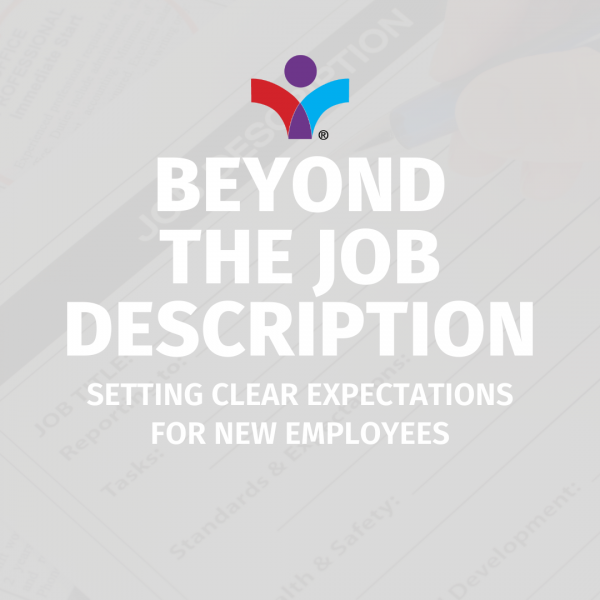Back to NewsBeyond the Job Description: Setting Clear Expectations for New Employees
Posted 08/01/25

Hiring is only half the battle. The real differentiator is setting clear expectations for new employees—so people know what success looks like in week one, week four, and week twelve. When expectations are specific, new hires ramp faster, managers coach better, and teams avoid preventable friction.
On Beyond Compliance, Zach Abraham emphasized how clarity, trust, and consistent communication turn policy into practice. That starts on day one and compounds across a small team in places like Charleston, Morgantown, and Pittsburgh suburbs.
Why Expectations Beat Assumptions
- Faster ramp: Clear goals reduce guesswork and rework.
- Fair feedback: People accept coaching when standards are visible.
- Culture alignment: Values are easier to live when they’re defined in actions.
- Lower turnover: New hires stay when they know how to win.
Set the Foundation Before Day One
Great onboarding starts before the laptop arrives. Use these steps to make expectations concrete:
- Outcome-oriented offer: Alongside title and pay, include three 90-day outcomes. Example: “Own weekly client check-ins and reduce response time to under four business hours.”
- First-week agenda: Send a simple calendar: who they’ll meet, what tools they’ll access, and what they’ll deliver by Friday.
- Values-in-action sheet: Translate values into behaviors. If “trust” is a value, spell it out: “We reply within one business day—even if it’s a placeholder.”
Creating a 30/60/90 That Actually Guides Work
Vague plans lead to vague performance. A practical 30/60/90 anchors setting clear expectations for new employees in real work:
30 Days: Learn and Support
- Shadow two service calls or client meetings per week and document key steps.
- Complete core systems training and pass a short checklist (logins, workflows, security).
- Deliver a one-page “What I’m seeing/learning” summary to your manager.
60 Days: Own Repeatable Tasks
- Take ownership of weekly reporting with no manager edits for two consecutive weeks.
- Run one internal meeting using the team’s agenda template and action list.
- Present two improvements to an existing process, with quick wins identified.
90 Days: Deliver Outcomes
- Hold a light-weight retrospective: what’s working, what’s stuck, what to change next quarter.
- Demonstrate role outcomes (e.g., time-to-response, error rates, customer satisfaction).
- Align next-quarter goals to team KPIs and company priorities.
Make Values Unmistakable (and Measurable)
Teams thrive when values are visible in everyday decisions. In the podcast, Zach stressed that trust isn’t a poster—it’s a behavior. Turn your values into “always/never” statements:
- Trust: Always acknowledge messages within one business day. Never let a client wonder if we received their request.
- Respect: Always disagree in private first; use data and examples. Never criticize people in group chats.
- Accountability: Always publish who/what/when for tasks after meetings. Never leave deadlines off action items.
Manager Playbook: Five Conversations in the First 30 Days
Managers are the bridge between policy and practice. These short, structured conversations turn intent into action:
- Role clarity (Day 1): Confirm outcomes, not just tasks. “Here’s what good looks like in 90 days.”
- Working norms (Week 1): Response times, meeting etiquette, and how decisions get made.
- Feedback cadence (Week 2): When we’ll meet, how we’ll measure progress, and how to ask for help.
- Stakeholder map (Week 3): Who depends on this role and what they need every week.
- Checkpoint (Week 4): What’s clear/unclear, what to amplify, what to adjust.
Use Simple Artifacts to Reinforce Standards
Documentation doesn’t need to be heavy to be effective. A few light templates keep everyone aligned:
- One-page role scorecard: Purpose, top 3 outcomes, key measures, core responsibilities.
- Meeting notes template: Decision, owner, deadline—shared after every meeting.
- Weekly update: Wins, metrics, roadblocks, next week’s priorities.
When Expectations Slip, Reset Fast
Even strong teams drift. The fix is quick, clear, and kind:
- State the gap: “Our standard is X; what we delivered was Y.”
- Re-anchor to outcomes: Tie feedback to the 30/60/90 or role scorecard.
- Offer a path: Provide resources, pair-up support, or a micro-deadline.
- Follow up: Book a 15-minute check-in to close the loop.
Connect Expectations to Your Handbook
Your employee handbook should back up what you’re asking people to do. If you’re rolling out new norms for communication, remote work, or respectful workplace standards, align them with policy text and training. For leadership tips on rollout, see our piece on why leaders need to be involved in handbook rollouts.
Real-World Example: Turning “Be Responsive” Into Action
Instead of saying “be responsive,” define the behavior and the metric:
- Behavior: Acknowledge all internal messages by end of day; client messages within one business day.
- Metric: Response-time dashboard in your help desk or CRM.
- Coaching: Review response trends in weekly one-on-ones and celebrate improvements.
Setting Clear Expectations for New Employees Pays Off
Clarity accelerates trust and performance. When you focus on setting clear expectations for new employees—outcomes, behaviors, and checkpoints—people ramp faster, culture strengthens, and customers feel the difference.
Hear more from Zach Abraham and co-host Luke Hladek on Beyond Compliance. The episode dives into trust, communication rhythms, and making values practical from day one.
